|
Now that I'm done with a little art project, I'm returning to the Tutankhamun exhibit photos up. He had so many beautiful gilded wood pieces. I'll start with the ankh:
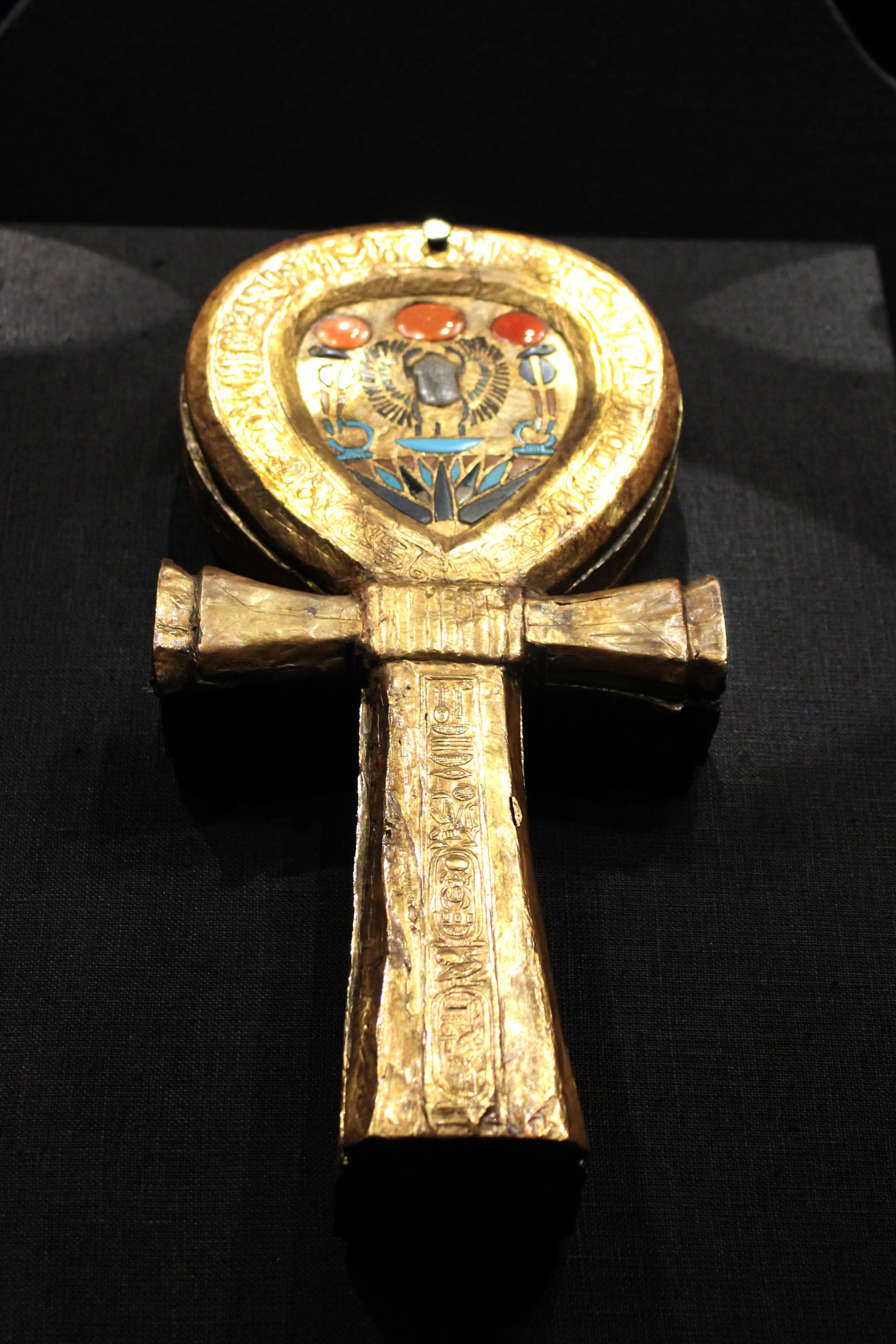
Mirror case made from gilded wood and in the shape of an Ankh symbol
Reign of Tutankhamun 1336-1326 BCE
Height 27cm (10.6inches)
Grand Egyptian Museum #? (Didn't photograph info card.)
|
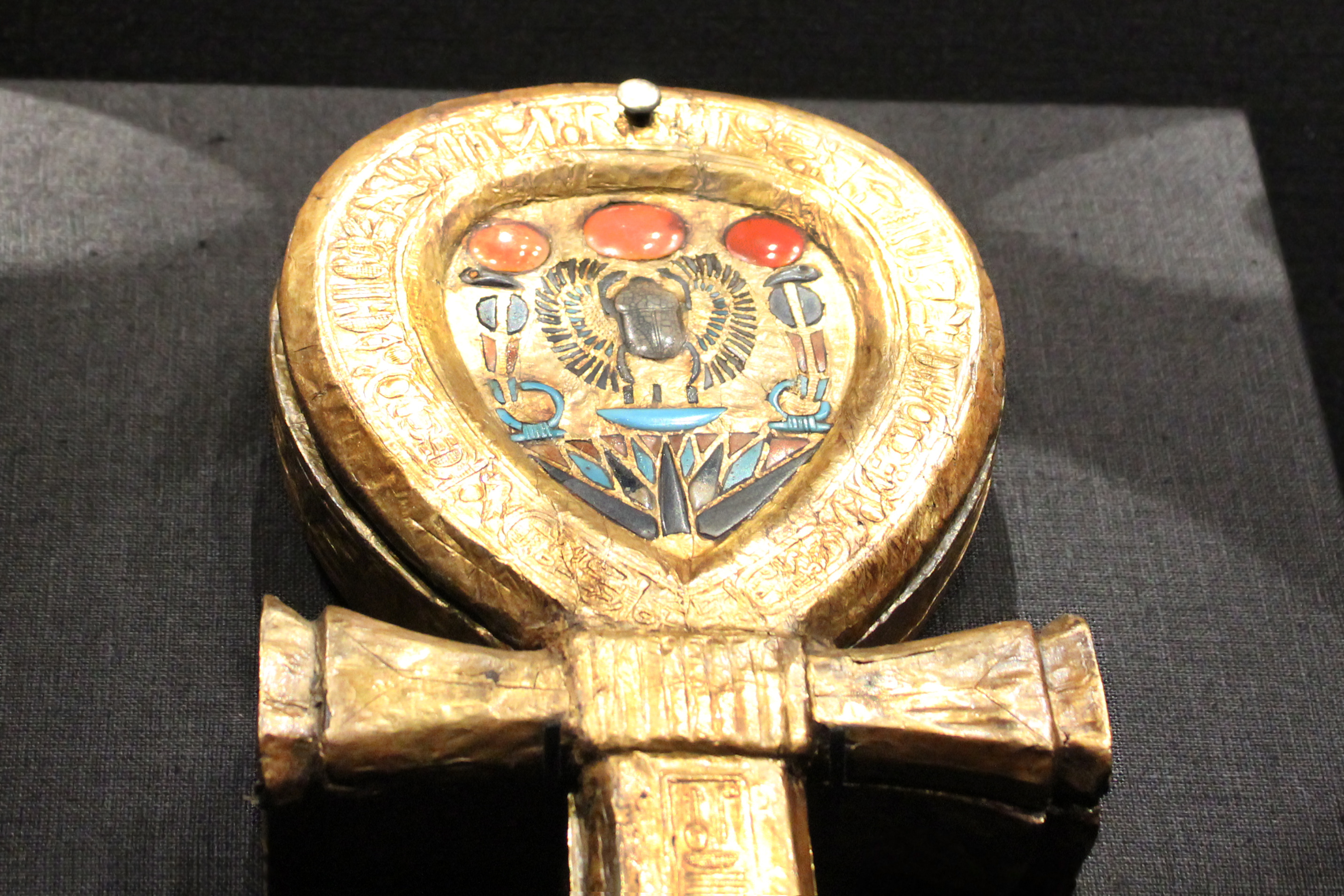 Slightly better details in this photo...
Slightly better details in this photo...
"A text on the case's hand reads, 'The good god, lord of the Two Lands, Lord of Ritual, King of Upper and Lower Egypt, Nebkheprure, son of Ra, Tutankhamun, Ruler of Southern Heliopolis (Thebes).' Additional inscriptions run around the loop; silver knobs were used to hold the lid to the case." Zahi Hawass, Tutankhamun and the Golden Age of the Pharaohs (National Geographic 2005), page 258
|

Wooden Ceremonial Shield with King as Sphinx Trampling on Nubian Enemies
Wood, Stucco, Gold Leaf, Ebony Inlaid
Height 89 cm (35inches)
Reign of Tutankhamun 1336-1326 BCE
Grand Egyptian Museum #341

"The rolling hills at the bottom of the shield form the hieroglyph that translates as "foreign land." The king is portrayed trampling his enemies underfoot." (From info card)
|
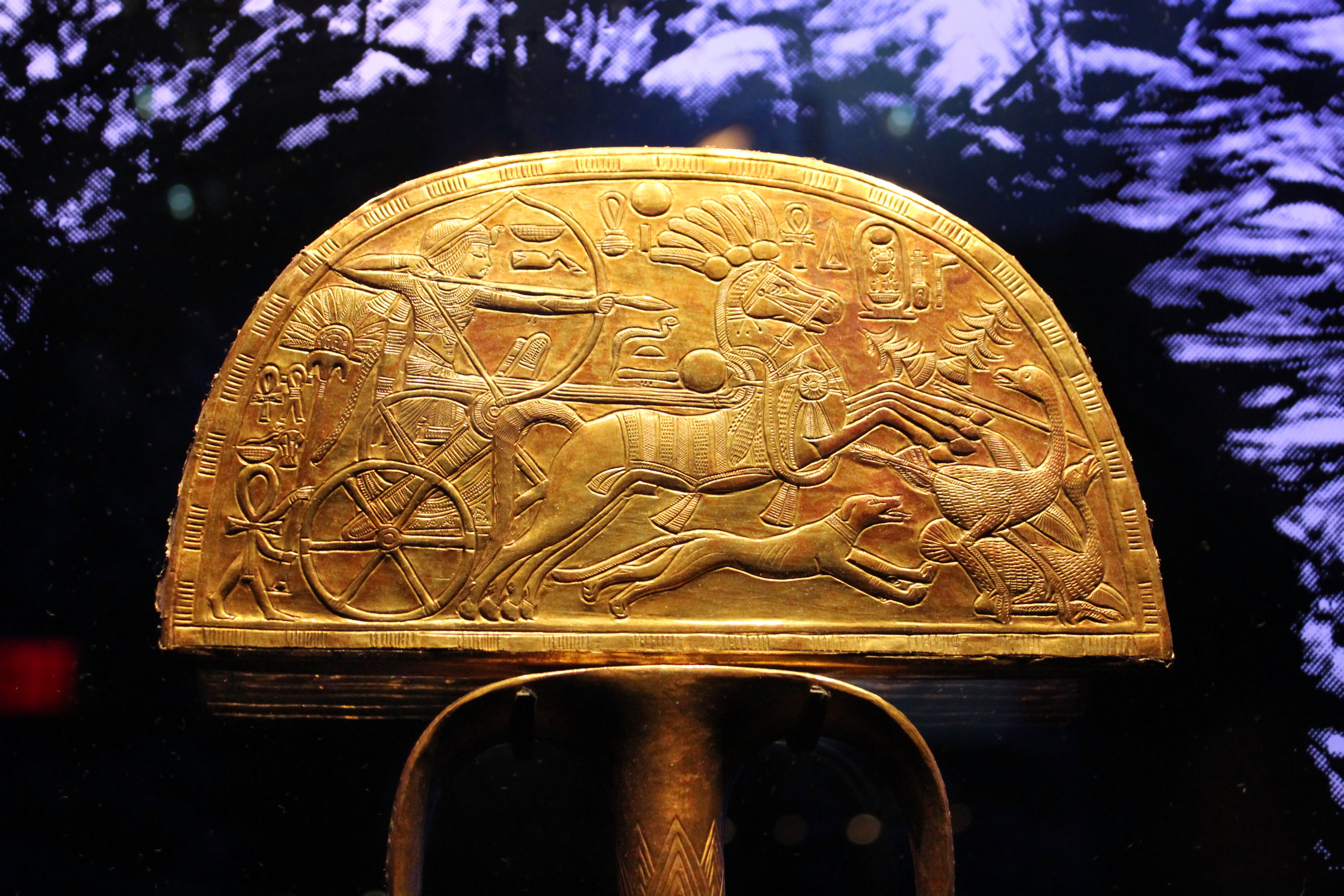
Gilded Wooden "Ostrich Hunt" Fan
Wood, Gold Leaf
Width of fan 18.8cm (7.4 inches)
Grand Egyptian Museum #284
"The inscription on the stick says that Tutankhamun hunted ostriches in the desert near Heliopolis and provided the feathers for this fan." (From the info card)
|

Gilded Wooden Statue Shrine with Scenes of Tutankhamun and Ankhesenamun
Reign of Tutankhamun 1336-1326 BCE
Grand Egyptian Museum #GEM 199-1 (Previously JE 61481)
|

The Global Egyptian Museum website has more info:
"This small shrine, made of wood and covered with thick gold, rests on a silver-plated sledge. The exterior and the double doors are decorated with scenes showing the king and his wife hunting and enjoying life.
"The scenes on the double doors are surrounded by friezes of decorations, royal cartouches, and rekhyt birds. Rekhyt birds are lapwings or plovers with human arms, that symbolize all the people ruled by the king.
"Inside the shrine, an ebony pedestal and back pillar bearing the king's name indicated that it had once housed a statue, perhaps that of the goddess Weret-Hekau, Great of Magic, who is mentioned several times in the texts, or a statue of the king himself."
|

Height: Roughly 20 inches tall (50.5cm); Width: Roughly 12.5 inches (32 cm)
|
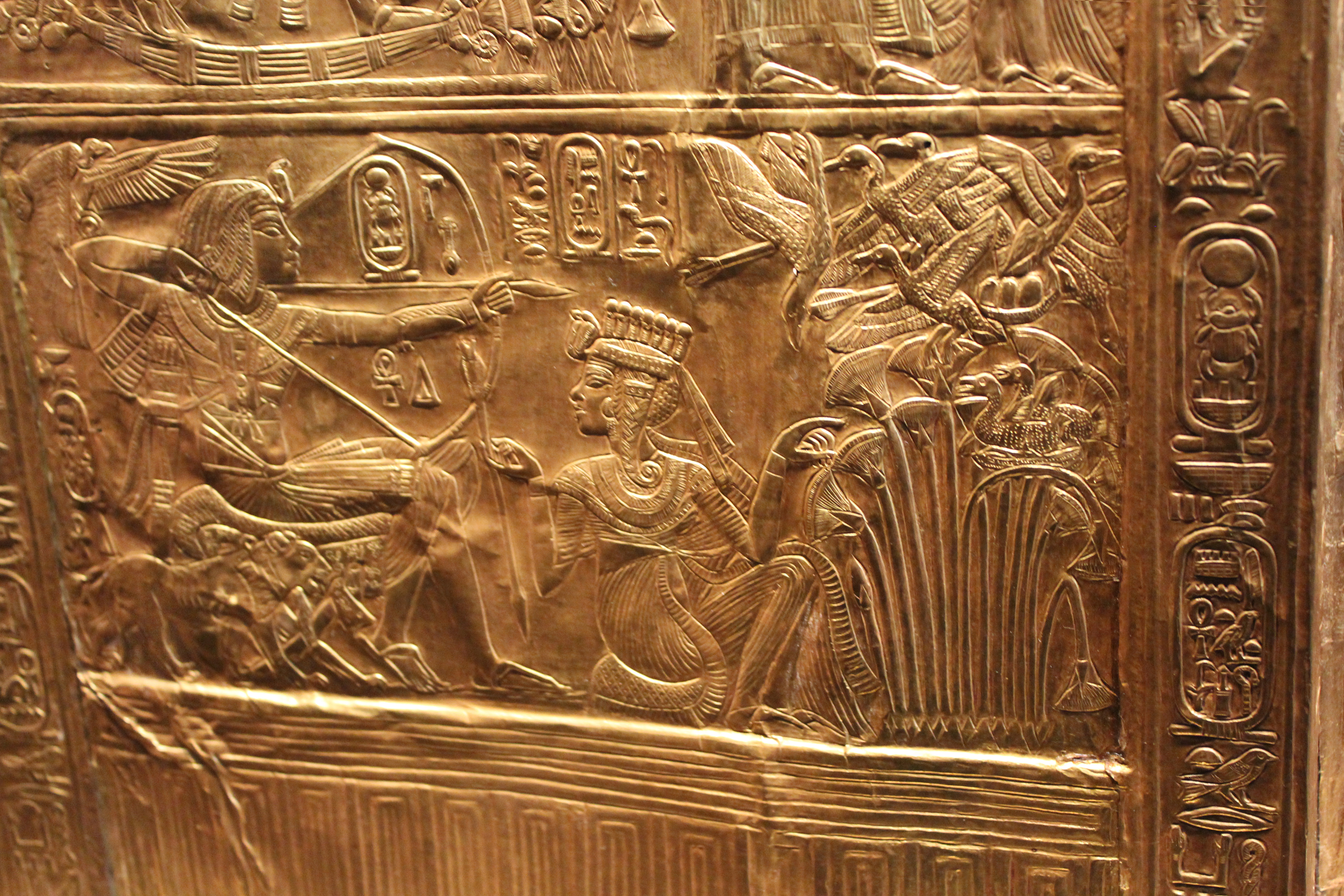
Ankhesenamun hands Tutankhamun an arrow and points to the abundant prey...

Alison Roberts explains the central scene:
"The queen's gesture highlights the return to Hathor's traditional rites after Akhenaten's reign."
"Ankhesenamun shakes a naos sistrum and offers her menit-necklace to Tutankhamun, empowering him with Hathor's solar attraction. Royal women in Akhenaten's reign were never shown holding a menit, though the necklace's new design here clearly displays Amarna influence. Now, for the first time, the counterpoise terminates in an aegis, featuring a female head crowned with a solar horned headdress and human hands holding out Ankh-signs of life, echoing the Aten's raying hands bestowing 'life' in Amarna cult scenes."
Alison Roberts, _Golden Shrine,Goddesss Queen: Egypt's Anointing Mysteries_, (Northgate Publishers 2008), page 19
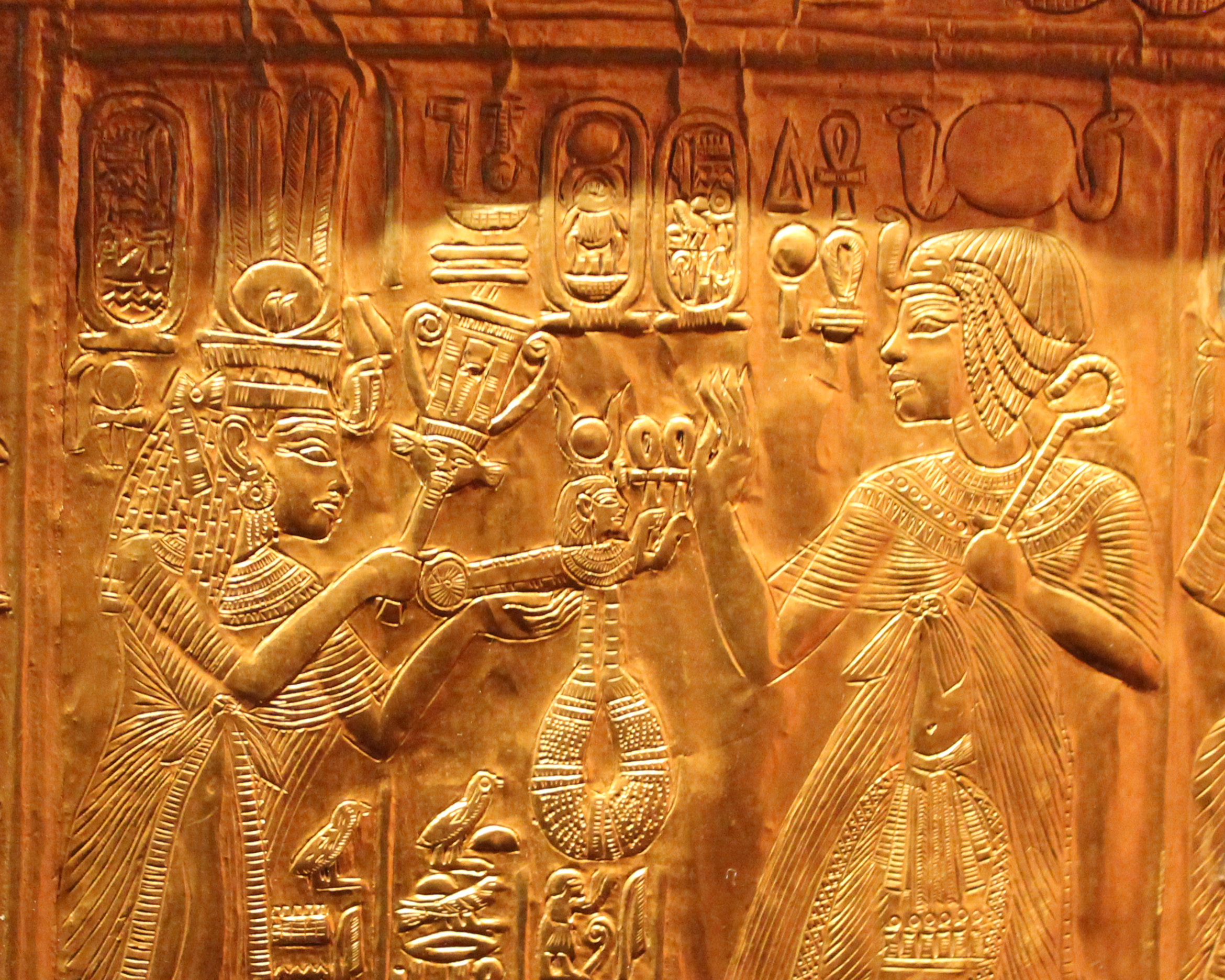
Close up of that scene....
Here, the scene is clearly re-stablishing that it is the solar deity Hathor who is bestowing life.
|
I may have even more photos to come in a later post!
|


![]()